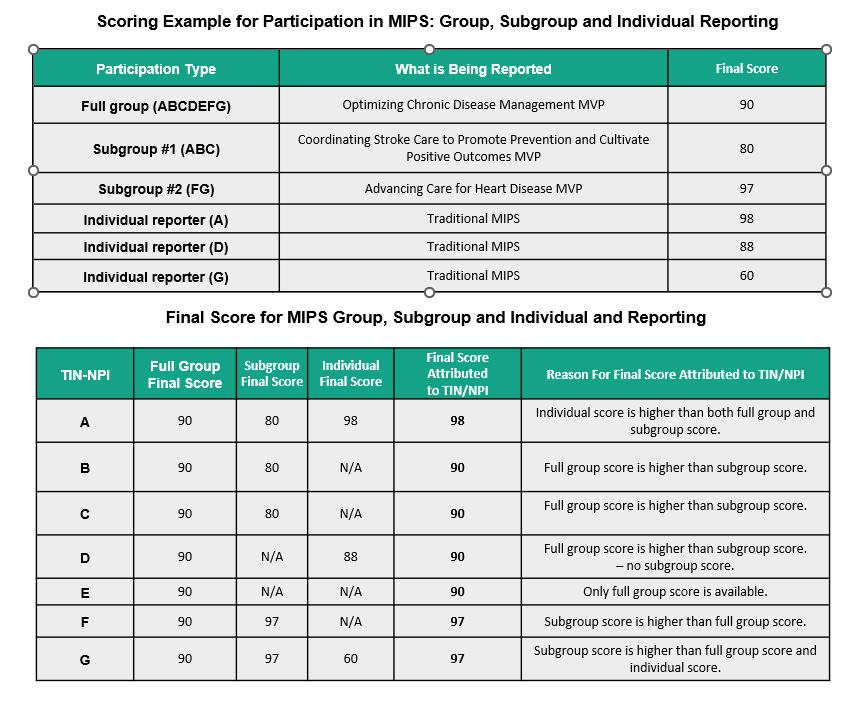MIPS, the Merit-Based Incentive Payment System, is evolving. CMS has laid out a plan to increase quality of care while controlling costs, and all Medicare providers are expected to participate in eligible alternative payment models by 2030.
In this blog post, we'll discuss the changes for 2023 and how small practices can maximize their scores and reimbursement.
Our webinar series for MIPS 2023 is also a good place to get started on how you can maximize your MIPS score this year and earn a higher reimbursement.
- Getting Started with MIPS Value Pathways in 2023
- The Next Phase of MIPS: How to Succeed in Traditional MIPS & MIPS Value Pathways
- Traditional MIPS Reporting: Back to the Basics
-Apr-06-2023-02-18-01-7828-PM.png?width=708&height=472&name=MicrosoftTeams-image%20(8)-Apr-06-2023-02-18-01-7828-PM.png)
Fortunately, not much has changed in overall MIPS complexity for the 2023 performance year. The penalty avoidance threshold remains at 75%, eligibility is unchanged, and the MIPS categories are the same. However, MIPS has become more challenging, and the reporting options have become more complex.
The top three changes that will impact small practices the most are:
1. The removal of measures #110 and #111 for influenza and pneumonia from Traditional MIPS. These measures have been added to new measure #493, which combines both vaccines with the Tdap and herpes zoster vaccines. Clinicians who report new measures in 2023 will receive a minimum of seven points, which goes for any new measure.
2. The introduction of MIPS Value Pathways (MVPs) as a reporting option in 2023. MVP reporting allows clinicians to compare themselves better to their peers who have similar patient encounters. Clinicians only need to report four quality measures instead of six, and they can report both Traditional MIPS and MVPs at the same time. CMS will take the higher of all available scores for each clinician.
There are some true benefits that small practices could take advantage of here. I have written extensively on MVPs in a previous blog post here.

3. The elimination of the Exceptional Performance Bonus, which may have a negative impact on some practices. Clinician groups that took the exemption and struggled to reach the penalty avoidance threshold will be thrown right back into MIPS in 2023, which will drive up the dollar amount in the penalty side of the bucket.
As we head into the 2023 MIPS reporting year, there are steps you can take to maximize your score and take part in the incentive payouts. However, there is no magic bullet that will guarantee success.
Here are some strategies to help you improve your score if you are a small practice.
Be creative with your measure selection. While it may be tempting to stick with the same measures you've reported year after year, this won't get you the scores you need to be successful. Take a deep dive into your measure options and consider choosing a new measure. In MIPSpro, you can enter your most-used CPT codes to see what measures you may have at least 20 patient encounters for.
Add a new measure as your seventh measure is a good safety blanket, as all new measures earn a minimum of seven points, regardless of performance. Remember, participation is more important than performance when it comes to new measures.
Reduce the burden on your staff by creating templates or using technology to answer questions. For example, with measure #134 Depression Screening and Follow Up, you can use data from 14 days before the visit to two days after the visit. Consider using technology to perform screening before patients come in for their visit. Our partner, Videra, offers a solution that can help.
If you are a small practice with 15 or fewer providers, you automatically qualify for an exemption from the Promoting Interoperability category. However, if you choose to report in this category and your score is better than your Quality score, it could boost your overall score. Just remember to report the category as a small practice, and your score will be reweighted accordingly.
Take control of your Cost score. The Cost category score can be surprising and even shocking to many clinicians. Through MIPS Cost Analytics, you can gain insight into your MIPS Cost scores, including trends and areas for improvement. You can even see referring providers that are more expensive than others. Use this program to get the most out of your Cost score.
In conclusion, there is no one-size-fits-all solution to maximize your MIPS score in 2023. However, by being creative with your measure selection, adding a new measure, reducing the burden on your staff, reporting the Promoting Interoperability category as a small practice, and taking control of your Cost score, you can increase your chances of success.
It isn’t too late to get started. Please reach out to the Healthmonix sales team and see what the best solution is for you.
